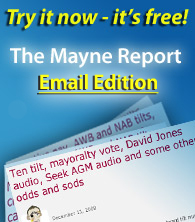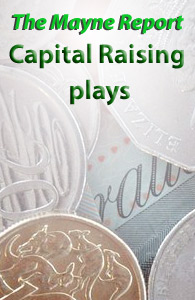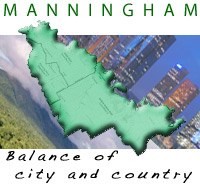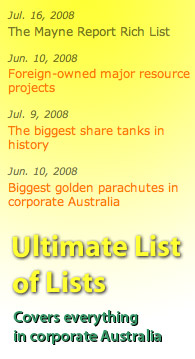Oz companies which stumbled offshore
January 20, 2017
This list tracks Australian companies which failed in their offshore expansion plans. Worth resurrecting for Crikey.
Allco HIT: huge write-downs, the biggest in the Strategic Finance business due to enormous bad debts in New Zealand, sent the 2007-08 result for this highly geared Allco vehicle plunging to a net loss of $322.2 million.
AMP: lost $5.54 billion loss in 2004 following the disastrous move into the UK over the previous 25 years.
ANI: Asset write-downs in Europe sent Australia's largest heavy engineering group into the red with a $213 million annual loss in 1995-96 just a couple of years after Kerry Packer sold his stake for a big profit.
APN European Retail Property Group: write-downs and derivative losses on its European investments produced a net loss of $309.4 million for the year ending June 30, 2009. A further $66.5 million was lost in 2009-10.
Astro Japan Property Trust: formerly Babcock & Brown's Japanese play, heavy write-downs of Japanese property investments delivered a $367 million net loss for 2008-09.
AWB: troubles in its bleeding Brazilian business sent the old wheat monopoly to a net loss of $156 million in 2008-09.
Babcock & Brown Capital: announced a loss of $1.427 billion for the 2008 calendar year which reduced claimed net assets of $1.28 billion down to negative equity of $541 million. Was renamed Eircom Holdings but its Irish telco investment got no better as the GFC clobbered the country.
Babcock & Brown Infrastructure Group: announced a $977 million full-year loss for 2008-09 and then changed its name to Prime Infrastructure Holdings and managed to lose $959 million in 2009-10 before being taken over by Brookfield. These losses included big hits on infrastructure assets in New Zealand, the US and the UK.
Burns Philp: huge write-downs on its ingredients business sent the company to a $173.3 million net loss for the year to June 30, 1997 as new largest shareholder Graeme Hart watched his net worth almost disappear before a miraculous recovery.
Centro: the Centro twins dropped more than $3 billion on its huge US shopping centre investments, the biggest disaster being the New Plan acquisition at the top of the market before the GFC struck.
Challenger Infrastructure Fund: paid too much for assets in the UK so write-downs delivered a $139 million net loss for 2008-09 and a further $210 million loss in 2009-10.
Crown: write-downs on its US, Canadian and UK assets delivered a loss of $1.2 billion for 2008-09, compared with a $3.5 billion profit in the previous financial year when it was demerged from the Packer family's media assets. However, the Macau investments have performed well for Crown.
Delta Gold: reported a $114.7 million bottom line loss in 1999-2000 after writing down the value of its Zimbabwe and Solomon Islands mines by $143.7 million.
ERG: despite showing loads of promise, rarely did it make money on these global transport contracts and this contributed to a $244 million net loss in the 2001-02 financial year.
Foster's: lost most of the $3 billion it spent in 2000 buying the Californian-based wine business Beringer.
Galileo Japan Trust: was late with its December 2008 results which came in with a net loss of $196.4 million after heavy write-downs. More write-downs produced an additional $62 million loss in 2009-10.
Goodman Group: heavy property write-downs on its global industrial portfolio delivered a $1.1 billion loss for 2008-09 as it unveiled a massive capital raising to fix the over-leveraged balance sheet. Came up with another $562 million loss for 2009-10.
GPT Group: the property group announced a $1.07 billion loss for 2009 and an eye-popping $3.25 billion loss in 2008 after its European Babcock & Brown joint venture went pear-shaped, along with other investments such as the US seniors portfolio.
HIH: collapsed in 2001, partly thanks to huge losses suffered on its US insurance operations.
HFA Accelerator Plus: announced a loss of $150 million on its global investment portfolio for the year ending June 30, 2009.
Hooker Corporation: George Herscu went broke after expanding into US shopping centres.
Hoyts: lost plenty on an all-fated global cinema acquisition binge in the 1990s competing with Village Roadshow.
IAG: new CEO Mike Wilkins produced $400 million in write-downs and restructuring charges which led to a $261 million net loss in 2007-08, mainly thanks to over-paying for UK assets during the Michael Hawker era.
Lend Lease: announced a $715 million loss for 2002-03 after $945 million worth of writedowns in value of its US, Asian and European real estate businesses.
Macquarie Countrywide Trust: the shopping mall owner announced an annual net loss of $1.4 billion in 2008-09, largely due to write-downs on its over-geared US portfolio, much of which has now been sold.
Macquarie DDR: a $220 million loss for the December half blew out to $616 million for the full 2008-09 financial year after further write-downs of its regional shopping centres in the US.
Macquarie Infrastructure Group: announced a $1.71 billion loss for 2008-09 after belatedly writing down the value of its over-geared toll road investments, mainly in the US.
MIM: posted a widely anticipated loss of $205 million for the six months to December 31, 2002, largely because of losses of $238 million associated with the closure of its two European smelters.
Normandy Mining: Robert de Crespigny's company managed a bottom line loss of $154.6 million in 2000-01, its last year full year as a listed company, thanks to write-downs at its Kasese cobalt project in Uganda.
One-tel: the upstart telco backed by the Murdoch and Packer families went bust in 2001, partly due to troubles in its various European operations.
Pacific Dunlop: the rot really set in the 1995-96 when a $340 million write down on its pacemaker division sent it to a a bottom line loss of $133 million.
Record Realty: the Allco-managed property fund took some big write-downs in 2007-08, plunging to a net loss of $253.5 million as it proceeds with a staged liquidation that may not leave anything for shareholders.
Rubicon America Trust: property write downs led to a $140 million net loss for 2007-08 but it should have been more given it claims to have net assets of $210 million when the market capitalisation is $30 million.
Rubicon Europe: weighed down by excessive debt and big write-downs led to a net loss of $218.5 million for 2007-08.
Rubicon Japan: plunged to a net loss of $185 million in 2007-08 after big write-downs but still claims to have net assets of $195 million when the market values the trust at less than $30 million.
Slater and Gordon: paid an excessive $1.3 billion for the Quindell UK integrated legal business and quickly sent its share price tumbling from more than $8 to less than $1 in 6 months.
Tattersalls: took a big write-down on ill-fated UK acquisition.
Tishman Speyer Office Fund: the half year loss of $223 million was bad enough but further write-downs sent the US property fund tumbling to a $621 million loss for 2008-09.
Valad Property Group: heavy write-downs after a foolish UK expansion program delivered a bone-crunching $1.49 billion loss for 2008-09 after the half year figure had come it at $821 million.
Westfield: announced a net loss of $708 million for the first half of 2009 courtesy of $2.9 billion in property write-downs. $3.5 billion in write-downs, largely related to US and UK investments, delivered a bottom line loss of $458 million for calendar year 2009.
Westpac: plunged to what was then a record loss of $1.6 billion in the year to September 30, 1992, forcing a $1 billion rights issue as the bank almost went broke due to massive bad debts, especially in the Queensland and Melbourne property markets. Also lost badly on its US operations.
* If we have missed any, please email Stephen@maynereport.com.
AMP: lost $5.54 billion loss in 2004 following the disastrous move into the UK over the previous 25 years.
ANI: Asset write-downs in Europe sent Australia's largest heavy engineering group into the red with a $213 million annual loss in 1995-96 just a couple of years after Kerry Packer sold his stake for a big profit.
APN European Retail Property Group: write-downs and derivative losses on its European investments produced a net loss of $309.4 million for the year ending June 30, 2009. A further $66.5 million was lost in 2009-10.
Astro Japan Property Trust: formerly Babcock & Brown's Japanese play, heavy write-downs of Japanese property investments delivered a $367 million net loss for 2008-09.
AWB: troubles in its bleeding Brazilian business sent the old wheat monopoly to a net loss of $156 million in 2008-09.
Babcock & Brown Capital: announced a loss of $1.427 billion for the 2008 calendar year which reduced claimed net assets of $1.28 billion down to negative equity of $541 million. Was renamed Eircom Holdings but its Irish telco investment got no better as the GFC clobbered the country.
Babcock & Brown Infrastructure Group: announced a $977 million full-year loss for 2008-09 and then changed its name to Prime Infrastructure Holdings and managed to lose $959 million in 2009-10 before being taken over by Brookfield. These losses included big hits on infrastructure assets in New Zealand, the US and the UK.
Burns Philp: huge write-downs on its ingredients business sent the company to a $173.3 million net loss for the year to June 30, 1997 as new largest shareholder Graeme Hart watched his net worth almost disappear before a miraculous recovery.
Centro: the Centro twins dropped more than $3 billion on its huge US shopping centre investments, the biggest disaster being the New Plan acquisition at the top of the market before the GFC struck.
Challenger Infrastructure Fund: paid too much for assets in the UK so write-downs delivered a $139 million net loss for 2008-09 and a further $210 million loss in 2009-10.
Crown: write-downs on its US, Canadian and UK assets delivered a loss of $1.2 billion for 2008-09, compared with a $3.5 billion profit in the previous financial year when it was demerged from the Packer family's media assets. However, the Macau investments have performed well for Crown.
Delta Gold: reported a $114.7 million bottom line loss in 1999-2000 after writing down the value of its Zimbabwe and Solomon Islands mines by $143.7 million.
ERG: despite showing loads of promise, rarely did it make money on these global transport contracts and this contributed to a $244 million net loss in the 2001-02 financial year.
Foster's: lost most of the $3 billion it spent in 2000 buying the Californian-based wine business Beringer.
Galileo Japan Trust: was late with its December 2008 results which came in with a net loss of $196.4 million after heavy write-downs. More write-downs produced an additional $62 million loss in 2009-10.
Goodman Group: heavy property write-downs on its global industrial portfolio delivered a $1.1 billion loss for 2008-09 as it unveiled a massive capital raising to fix the over-leveraged balance sheet. Came up with another $562 million loss for 2009-10.
GPT Group: the property group announced a $1.07 billion loss for 2009 and an eye-popping $3.25 billion loss in 2008 after its European Babcock & Brown joint venture went pear-shaped, along with other investments such as the US seniors portfolio.
HIH: collapsed in 2001, partly thanks to huge losses suffered on its US insurance operations.
HFA Accelerator Plus: announced a loss of $150 million on its global investment portfolio for the year ending June 30, 2009.
Hooker Corporation: George Herscu went broke after expanding into US shopping centres.
Hoyts: lost plenty on an all-fated global cinema acquisition binge in the 1990s competing with Village Roadshow.
IAG: new CEO Mike Wilkins produced $400 million in write-downs and restructuring charges which led to a $261 million net loss in 2007-08, mainly thanks to over-paying for UK assets during the Michael Hawker era.
Lend Lease: announced a $715 million loss for 2002-03 after $945 million worth of writedowns in value of its US, Asian and European real estate businesses.
Macquarie Countrywide Trust: the shopping mall owner announced an annual net loss of $1.4 billion in 2008-09, largely due to write-downs on its over-geared US portfolio, much of which has now been sold.
Macquarie DDR: a $220 million loss for the December half blew out to $616 million for the full 2008-09 financial year after further write-downs of its regional shopping centres in the US.
Macquarie Infrastructure Group: announced a $1.71 billion loss for 2008-09 after belatedly writing down the value of its over-geared toll road investments, mainly in the US.
MIM: posted a widely anticipated loss of $205 million for the six months to December 31, 2002, largely because of losses of $238 million associated with the closure of its two European smelters.
Normandy Mining: Robert de Crespigny's company managed a bottom line loss of $154.6 million in 2000-01, its last year full year as a listed company, thanks to write-downs at its Kasese cobalt project in Uganda.
One-tel: the upstart telco backed by the Murdoch and Packer families went bust in 2001, partly due to troubles in its various European operations.
Pacific Dunlop: the rot really set in the 1995-96 when a $340 million write down on its pacemaker division sent it to a a bottom line loss of $133 million.
Record Realty: the Allco-managed property fund took some big write-downs in 2007-08, plunging to a net loss of $253.5 million as it proceeds with a staged liquidation that may not leave anything for shareholders.
Rubicon America Trust: property write downs led to a $140 million net loss for 2007-08 but it should have been more given it claims to have net assets of $210 million when the market capitalisation is $30 million.
Rubicon Europe: weighed down by excessive debt and big write-downs led to a net loss of $218.5 million for 2007-08.
Rubicon Japan: plunged to a net loss of $185 million in 2007-08 after big write-downs but still claims to have net assets of $195 million when the market values the trust at less than $30 million.
Slater and Gordon: paid an excessive $1.3 billion for the Quindell UK integrated legal business and quickly sent its share price tumbling from more than $8 to less than $1 in 6 months.
Tattersalls: took a big write-down on ill-fated UK acquisition.
Tishman Speyer Office Fund: the half year loss of $223 million was bad enough but further write-downs sent the US property fund tumbling to a $621 million loss for 2008-09.
Valad Property Group: heavy write-downs after a foolish UK expansion program delivered a bone-crunching $1.49 billion loss for 2008-09 after the half year figure had come it at $821 million.
Westfield: announced a net loss of $708 million for the first half of 2009 courtesy of $2.9 billion in property write-downs. $3.5 billion in write-downs, largely related to US and UK investments, delivered a bottom line loss of $458 million for calendar year 2009.
Westpac: plunged to what was then a record loss of $1.6 billion in the year to September 30, 1992, forcing a $1 billion rights issue as the bank almost went broke due to massive bad debts, especially in the Queensland and Melbourne property markets. Also lost badly on its US operations.
* If we have missed any, please email Stephen@maynereport.com.
Copyright © 2024 The Mayne Report. All rights reserved






















